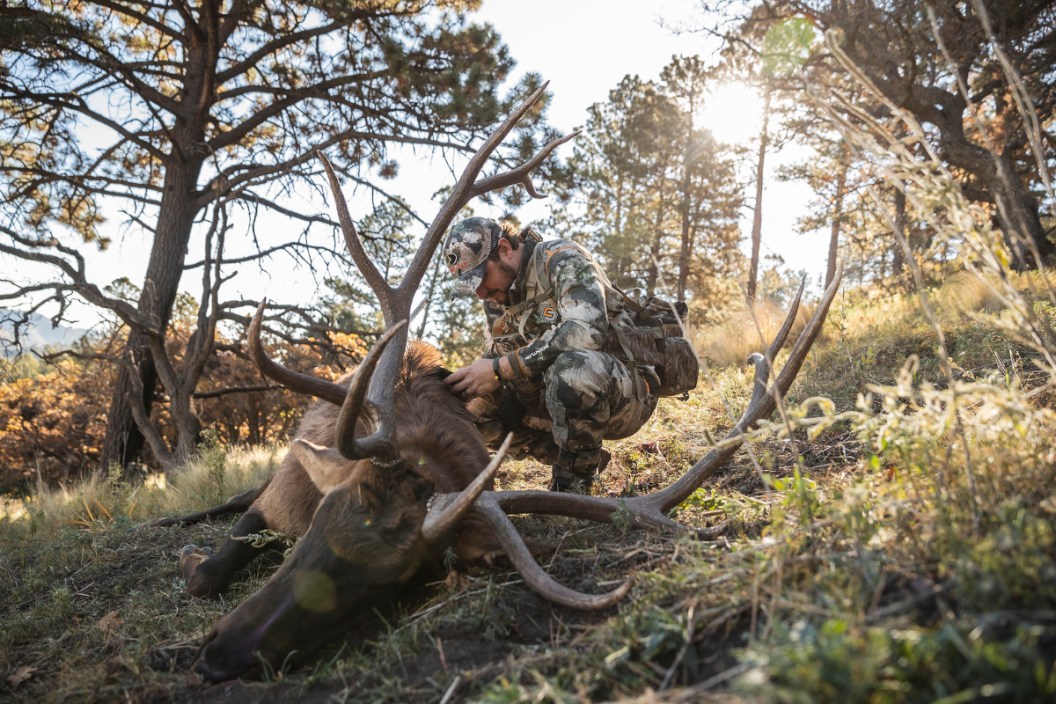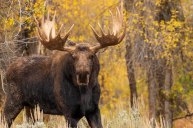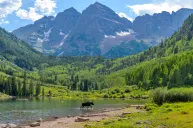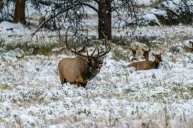Applying to drawn hunts can be a challenge. Here are a few tips to avoid any headaches.
Wherever you live as a hunter, you may have to apply for some kind of drawn hunt, lottery license system, or be a part of a pool to get leftover doe tags. Whether you love them or hate them, it is a fact of hunting life that at some point you may want the chance to hunt a wild game animal where the chance is drawn at random.
After carefully studying your own state's application process, hunt application deadlines, and the ensuing application period, (including application fees) you may have a headache. We don't blame you. It seems like most states try to make things as convoluted as possible. Sometimes even more so than their hunting regulations. Don't worry, there's good news. You will also find information about game animal overall health, populations, public land access, and even hunter success rates on draw hunts in the process in most cases.
What you will need to know is the draw odds and minimum point thresholds required to gain access to the wild game you desire for your bucket list hunt whether that be a big mule deer, pronghorn antelope, elk, moose, or whatever. In some states you may be able to get ahead of the curve by purchasing preference points which is an added expense, but monies from these types of systems go a long ways towards wildlife management programs.
Hunting Opportunities
Once you've reached the planning stage for your preferred hunt, you're going to need to consider whether or not building up points in any way - by buying them or by simply accumulating them over time - is actually worth the expense. Keep in mind not every state offers these kinds of opportunities, so read the rules carefully.
Even if a veteran hunter is only applying for a point, it is often necessary to purchase a hunting license and a pay a separate fee for that point. This is an investment in time and money that can become quite substantial over a period of years. If you're hunting that same state for something else that year, it's not that big of a deal, but if it's a "once-in-a-lifetime" thing, you may want to re-consider that state if you're dropping hundreds just to apply every year.
In most states where big game draws are the norm, there are still rules that apply to all hunters that make a small percentage of every tag pool become a pure lottery draw without the minimum point threshold having been reached.
The honest truth is that while some hunters - especially those who have lived their entire lives in the region - may wait for a lifetime to obtain the most coveted tags, (bighorn sheep or bull moose for example) could be stuck watching while a newbie walked right into one their first time applying.
If the wildlife management officials dictate that herd of big game animals can support the harvest of 200 bucks or bulls in a region, (for instance) then they can issue enough tags to supply hunters with enough opportunities for roughly half of those to be successful. However, when the numbers of hunters applying exceeds the amount of tags, then you are stuck with the lottery system.
Playing the Point System
The three basic systems to a drawn hunt are the lottery, bonus points, and preference points. The bonus point system means that in a state where you've tried unsuccessfully to draw a tag once, a point is added to your name for the following season meaning that you now have your name in the lottery twice. Certain states like Montana go even further in the effort to get the tags out to unlucky hunters by squaring the bonus points to give a hunter multiple times the chances for their dream hunt.
The most common is the preference point system, which is used to give an unsuccessful hunter an additional point towards the next hunting season without any extra cost. The main difference between the two systems is that preference points generally distribute some (or all) of the available tags to those hunters who have accumulated the most points.
The allocation of which is in the trickle down method whereby those with the highest held points gain access, and then works downward
Non-Resident Tags
For the most part, big game tags are given out with the priority being to award those who are residents of the state involved. This may seem to be unfortunate for both sides since many hunting their resident state may feel like they get outdrawn by nonresidents each year, while most states place limits on the number of non-resident big game tags allowed. Before you even apply, check to see what the percentage is for non-residents to residents. In some states it's as high as 90 percent of the tags going to residents with non-residents getting the remaining 10 percent. That can either be a hinderance or work to your advantage depending on how many people are applying.
Look over your priorities as to what you want to hunt and where, as some states are more liberal in their tag allotment than others. One issue that can have a double-edged sword is the fact that in some big game states, tags might only be available to hunters who've secured the services of a licensed guide.
Good or bad, if you have the money for it, you may have the upper hand, especially since some states allow for hunters to buy points without applying for a license.
Making a Game Plan
One of the issues with the points system is that those with high point earnings will consistently place them in big name zones with highly competitive application pools. Some high-quality hunt areas fall through the cracks every year because they are not well known enough to be considered as noteworthy units on the "dream hunt" scale. Don't base the place you apply exclusively on reported success rates. Many great areas fall through the cracks for most hunters because that's all they look at hen choosing an area.
Applying for underrated tags that require minimal points can be the difference between hunting at all and waiting (again) until next year. Sometimes the best, albeit most expensive, way to apply is by reaching out for the longshot tag, and by having a secondary hunt applied for an easier draw that might be a sure thing.
The bottom line is that you can hunt a cow or a doe, or wait for your bull tag to magically appear.
Leftovers Ain't So Bad
Everyone buys an over the counter tag at some point, even if they feel like their big game tag ship has sailed. It's not often, but unsold tags are a thing of reality at times, even when it seems an impossibility. You'll have to do some homework as to which state and what animal may offer such an advantage, but it's not so much different than planning your hunt through a drawing anyway.
In fact, it's not out of the realm of reality that some states will have leftover tags after the big draw is over. Honestly, it may be a reach, but we've all bought a gun raffle ticket from our local hunting club which included many great brands and models up for grabs. In the same sense, certain states even hold them for the right to obtain a coveted big game tag.
For fees you were going to pay anyway, and with about the same odds, you may as well give it a shot at least once. The money will definitely go to a good cause and you just might be the lucky winner.
Those Elusive Hunt Permits
Entering a drawing can be quite intimidating at first. However, once you've done it a few times and figured out how to navigate the state's systems and hunt categories, you can usually find ways to make applications to your advantage. Thankfully, it's much easier these days to play the odds in a drawing thanks to the more sophisticated online application systems.
For those who have applied in previous years, it can be tough to watch a season comes and go without drawing your desired tag, but it is all a part of the game. Just remember those permit fees aren't wasted. They are going back directly into conservation, and that's something you can be proud of helping with.
Looking for a new way to display those antler sheds? Go to Rack Hub and use the coupon code Craiger. Be sure to follow my webpage, or on Facebook and YouTube.
NEXT: THE 5 BEST AMERICAN ELK HUNTING OPPORTUNITIES FOR NEWBIES
WATCH




